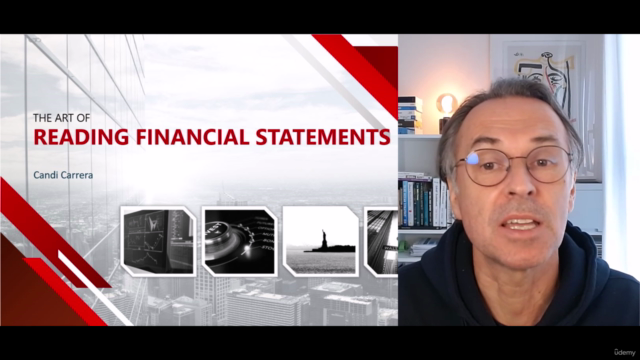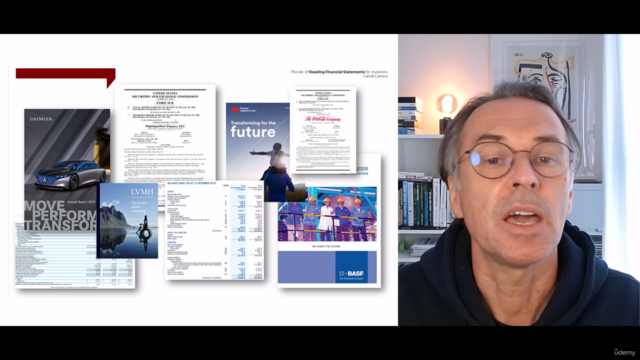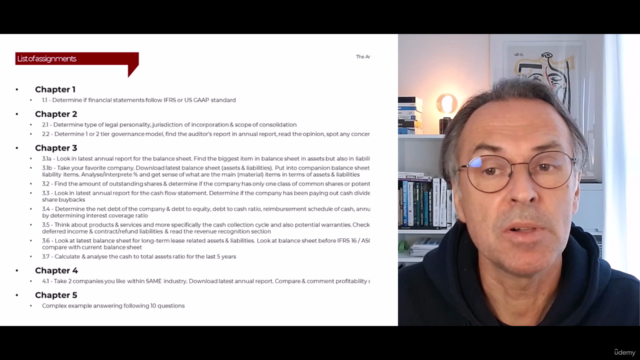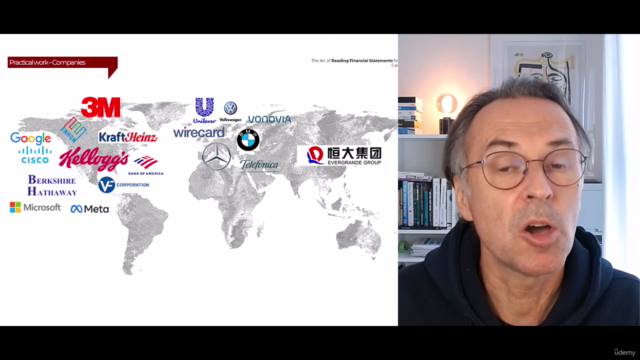The Art of Reading Financial Statements - Practitioner Level
Learn from a real value investor & independent board director, MBA, INSEAD IDP with PE & VC experience
4.70 (165 reviews)

1,382
students
16.5 hours
content
Aug 2023
last update
$84.99
regular price
What you will learn
Establish information source & download the latest financial report & identify accounting standard used IFRS, US GAAP or Local GAAP
Understand & identify main corporate governance elements : Determine corporate governance 1- or 2-tier model and external regulation
Understand role of statutory auditor, if audited identify statutory auditor, tenure of statutory auditor and audit opinion
Understand the scope of consolidation (& unconsolidation) of the company
Be able to do a vertical analysis of the balance sheet and understanding material assets & liabilities in balance sheet
Identify sources of capital including long-term debt, related schedule, cost to service long-term debt including interest coverage ratio, equity capital source
Deepen understanding of value creation for shareholders by understanding ROIC & WACC
Understand profitability of company by analysing revenue segments & cash generating assets, understand operating cash flow & working capital vs other cash flows
Be able to read earnings information including EPS, NOPAT, EBITDA, EBIT & net income
Screenshots




Related Topics
5036910
udemy ID
12/22/2022
course created date
4/5/2023
course indexed date
Bot
course submited by